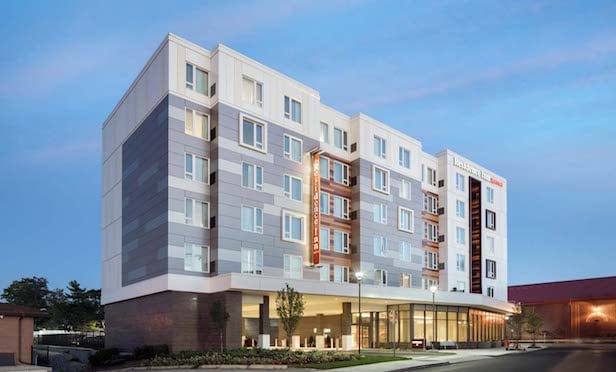SAN DIEGO—As GlobeSt.com recently reported, Chatham Lodging Trust has completed the acquisition of the 240-room Residence Inn San Diego Downtown-Gaslamp Quarter for $90 million, or approximately $375,000 per room. We spoke with Peter Willis, CIO of the firm, about the hotel market in Downtown San Diego and why this property was particularly appealing to Chatham.
GlobeSt.com: How would you characterize the market for hotel properties in Downtown San Diego?
Willis: In terms of hotel performance, Downtown San Diego has certainly always been a great hotel market with a very nicely diversified set of demand generators within the market between corporate and leisure business. Because of the weather and other advantages of being there, it's obviously a very desirable place to visit. There are good barriers to entry as an investor, especially in select-service hotels, so you look for that. One of the things we took a hard look at is that there is a lot of new hotel-room supply coming into the market. A lot of this supply has been from pent-up demand in the pipeline over many years, which is just coming to fruition. We believe we can withstand a lot of the supply that is coming because of the hotel's unique location and because of the brand.
GlobeSt.com: What about this particular property appealed to you most and will make it most valuable to you?
Willis: The Residence Inn brand, the location and the way the property was built make it a very appealing property. It's an extremely well-built hotel, and it's in such a heavily pedestrian-trafficked area. It has street-level retail configured in with the property, and that retail adds considerable value to the real estate. In addition, it has structured parking that came with the configuration of the building from the developer, which is considerably valuable for the real estate. Most of the new product in the Gaslamp doesn't come with sufficient parking in the development, which gives us a competitive advantage. These are off-setting economics that allow us to pick up revenue from folks who need parking but aren't staying in the hotel.
GlobeSt.com: Why are Gaslamp-centered hotels such a find?
Willis: This is a fortress location within the market. It is uniquely positioned to capture the convention crowd as well as people visiting the stadium. The restaurants and bars that draw people to the Gaslamp are another plus, and there's been some corporate demand in the area—there's evidence of office development and build-to-suits that we see in the neighborhood. It's got a lot of the things we look for, and we're excited about being there. We bought a Residence Inn in Mission Valley's Hotel Circle in 2011, but this is a different submarket within San Diego. In the Gaslamp, it benefits from being closer to the Convention Center.
GlobeSt.com: Are current hotel valuations in core markets sustainable, in your opinion?
Willis: I don't think anything is a straight line forever. We're investors for the long term, which is why we look at the fundamental metrics of how to select a property in our acquisition criteria, including having a AAA location with the right brand and the right development within its location. We look at whether it will be able to withstand the cycles pretty well. But the dynamics of San Diego, with where the Convention Center is—even though there's talk of some things moving around—we're well positioned regardless of where we are in the market. It doesn't mean we're immune to what may happen with supply coming in, but if there is an impact, it will be temporary. The fact that we're going in and managing the hotel is also of great value to us, and it should enable some unique opportunities to add value to the asset—not that Marriott was doing anything wrong, but this creates a new opportunity for us in operating the hotel.
GlobeSt.com: What changes do you expect to see in the hotel market this year?
Willis: The markets are going to continue to grow and grow favorably. We are seeing planned supply starting to come into the more visible planning stages, and we are starting to see this as signs of life for incremental development in these markets. We think there's still plenty of running room in the market in terms of RevPAR growth.
© 2025 ALM Global, LLC, All Rights Reserved. Request academic re-use from www.copyright.com. All other uses, submit a request to [email protected]. For more information visit Asset & Logo Licensing.







